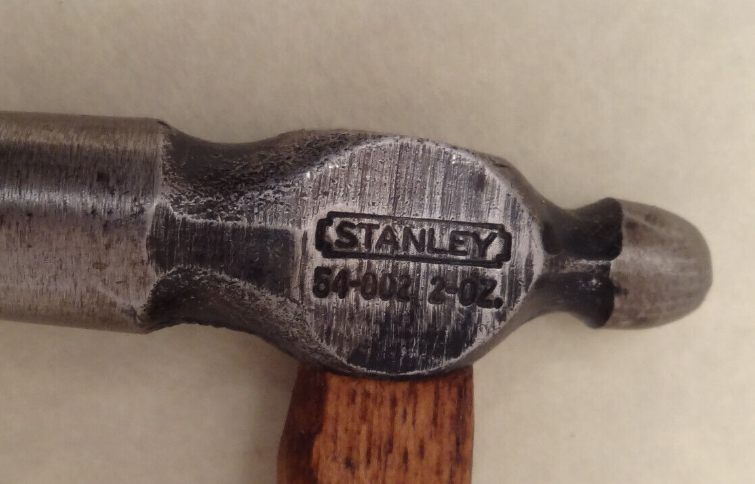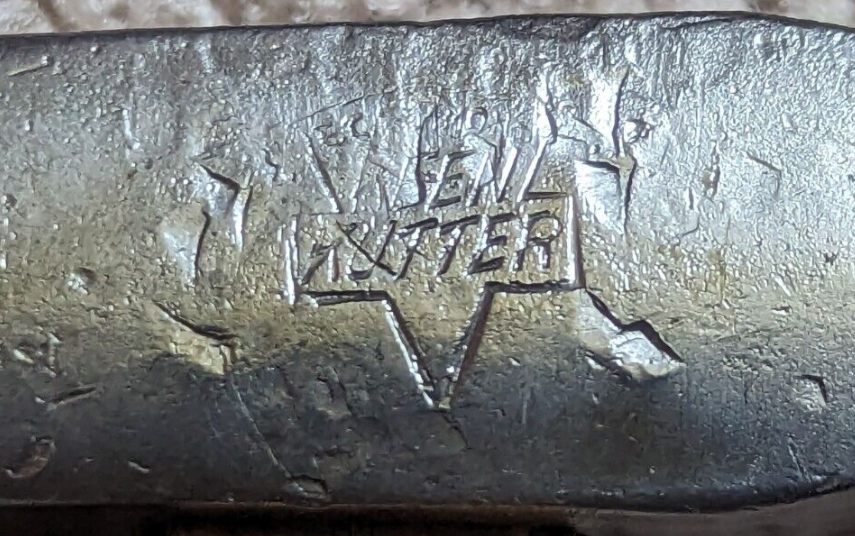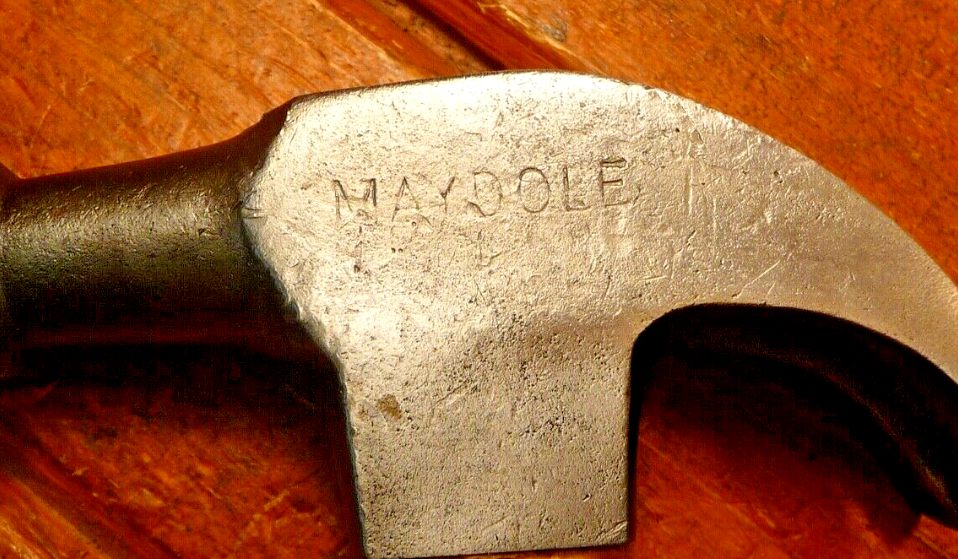Venturing into the world of antique hammers can be a fascinating and rewarding experience, especially if you have a curiosity and appreciation for the tools that form an integral part of our history. A hammer is one of the earliest known tools in human history, and discovering how to find, identify, and value these antique treasures can be both a pleasure and an investment opportunity.
To begin your exploration in antique hammers, it’s important to know what to look for when attempting to distinguish them from modern counterparts. The design is one of the key identifiers, as older hammers typically have simpler, straight lines and fewer frills compared to contemporary designs. Additionally, antique hammers usually have shorter handles, which were common in the past. This guide will delve deeper into the ins and outs of identifying antique hammers and understanding their value, so you can confidently recognize a quality piece and make informed purchasing decisions.
While the value of antique hammers can range from $30 to $200, there are factors to consider that can influence their worth, such as brand, originality, and condition. As you continue to refine your knowledge and understanding of these factors, your ability to evaluate the value and history of antique hammers will become an invaluable skill, offering a gateway to a rewarding world of tool collecting and appreciation.
Table of Contents
History of Antique Hammers
Stone Age to Bronze Age
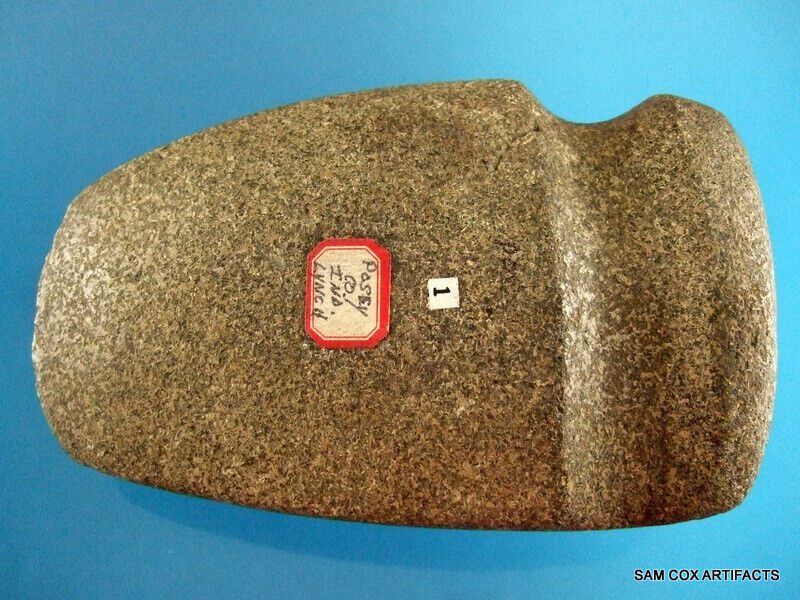
Your journey into the history of antique hammers begins in the Stone Age, where evidence suggests that humans began using hammers at least 3 million years ago. At this time, hammerstones served a variety of purposes, such as smashing, pounding, and shaping various materials. About 30,000 years ago, humans started affixing hammerstones to wooden or bone handles with animal sinew to create more advanced tools.
During the Bronze Age, hammers were crafted using bronze, a metal alloy made of copper and tin. This allowed for more considerable durability, strength, and versatility. The hammers of this era played a prominent role in shaping and crafting objects such as weapons, ornaments, and tools.
Iron Age to Industrial Revolution
As you move forward in time, you arrive at the Iron Age, where iron replaced bronze as the primary construction material for tools, including hammers. The advancement in metalworking led to improved durability and increased productivity. Iron hammers were in use for wide-ranging purposes, including carpentry, blacksmithing, and other trade activities.
Finally, during the Industrial Revolution, the creation and specialization of hammers evolved even further. New types of hammers emerged to cater to specific trade requirements, and mass production techniques allowed for more consistent and affordable tools. This development resulted in the diverse range of hammers that antique collectors admire and seek today.
To identify and value antique hammers, the age, condition, materials used, and historical significance all come into play. Understanding the rich history behind these essential tools can significantly enhance your appreciation for them and assist in making informed decisions when evaluating and collecting antique hammers.
8 Types of Antique Hammers and Their Valuation
In this section, we will explore eight different types of antique hammers and their respective valuations. As you learn about each type, consider their unique features and uses.
Claw Hammers
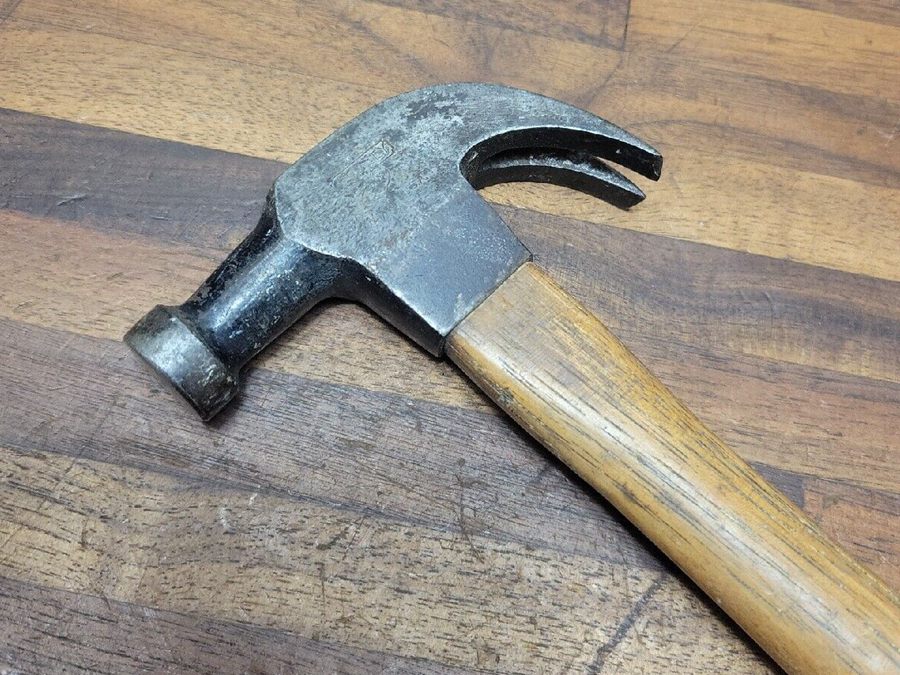
Claw hammers are the most common type of hammer and are typically used for driving nails into wood. They have a claw on one side of the head, which can be used to pull nails out of wood. These hammers can range in value from $30 to $200, depending on factors like age, condition, and rarity.
Mallets
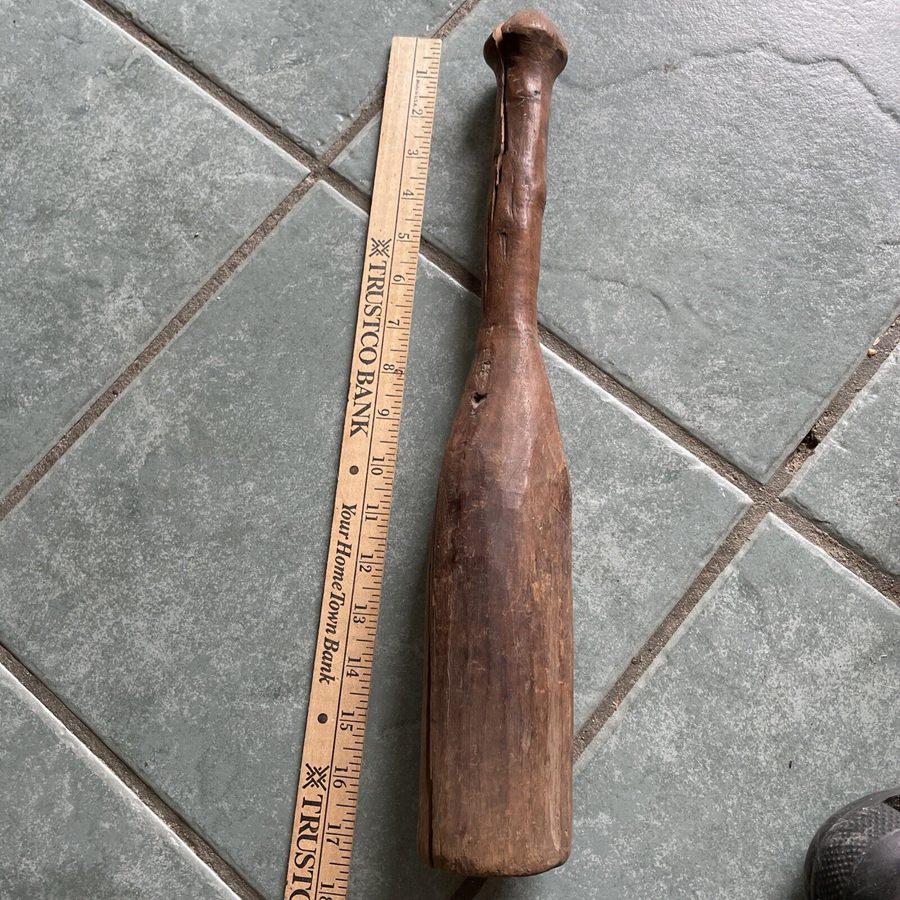
Mallets are a type of hammer with a large, round, or cylindrical head made of materials such as wood, rubber, or leather. They are primarily used for striking without damaging the surface of the material. The value of antique mallets can vary greatly, with prices ranging from $20 to $150 or more based on factors like material, quality, and age.
Veneer Hammers
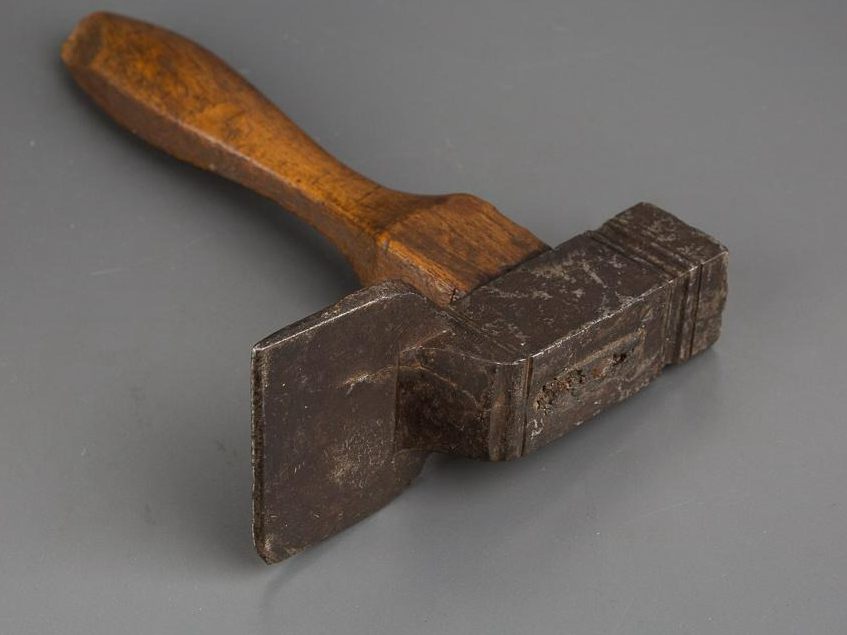
Veneer hammers have a broad, flat head to carefully apply pressure to wood veneer when gluing it onto a surface without leaving marks. These specialized hammers can have valuations between $50 and $250, depending on factors like age, condition, and rarity of the particular design.
Sledgehammers
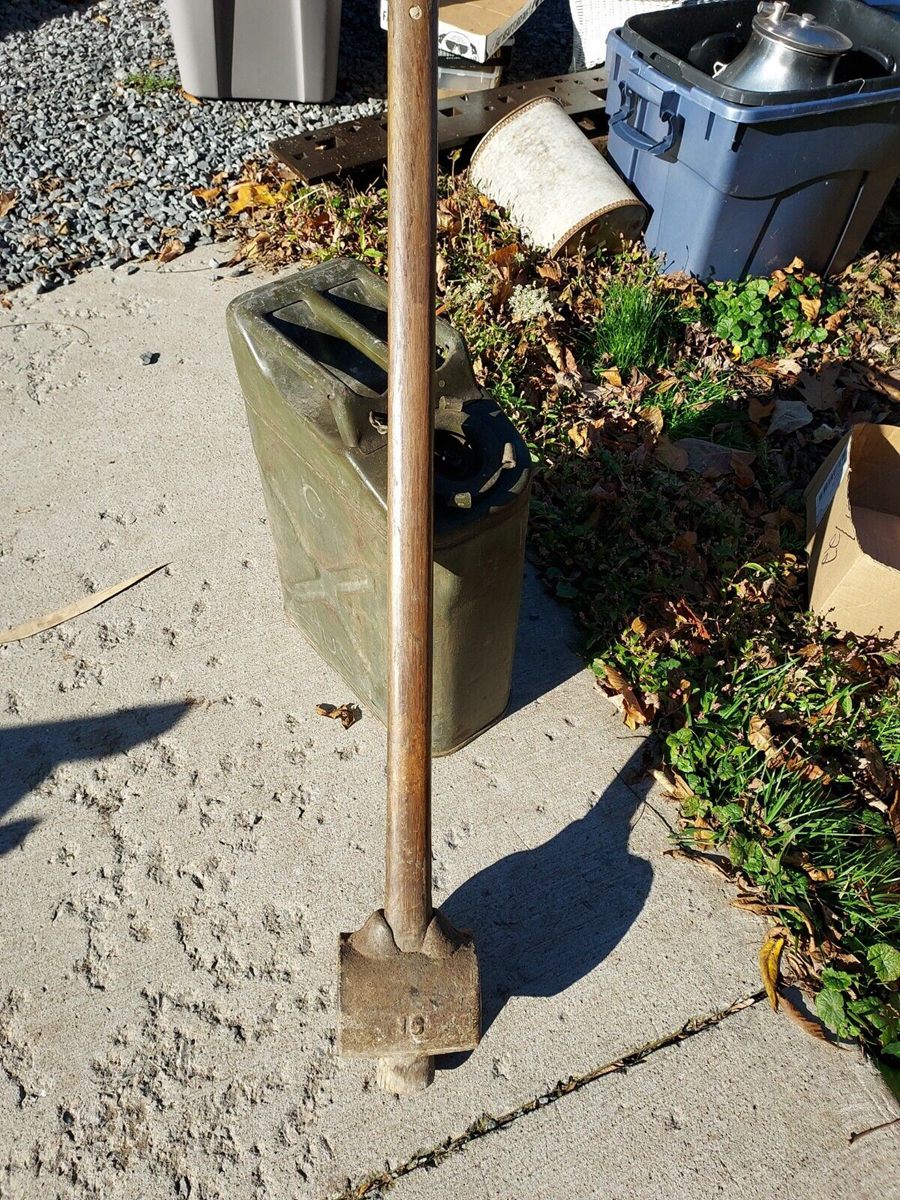
Sledgehammers are heavy hammers designed for demolition, with a long handle and a large, flat head. Antique sledgehammers can be valued between $60 and $300, depending on factors such as age, rarity, and condition.
Ball Peen Hammers
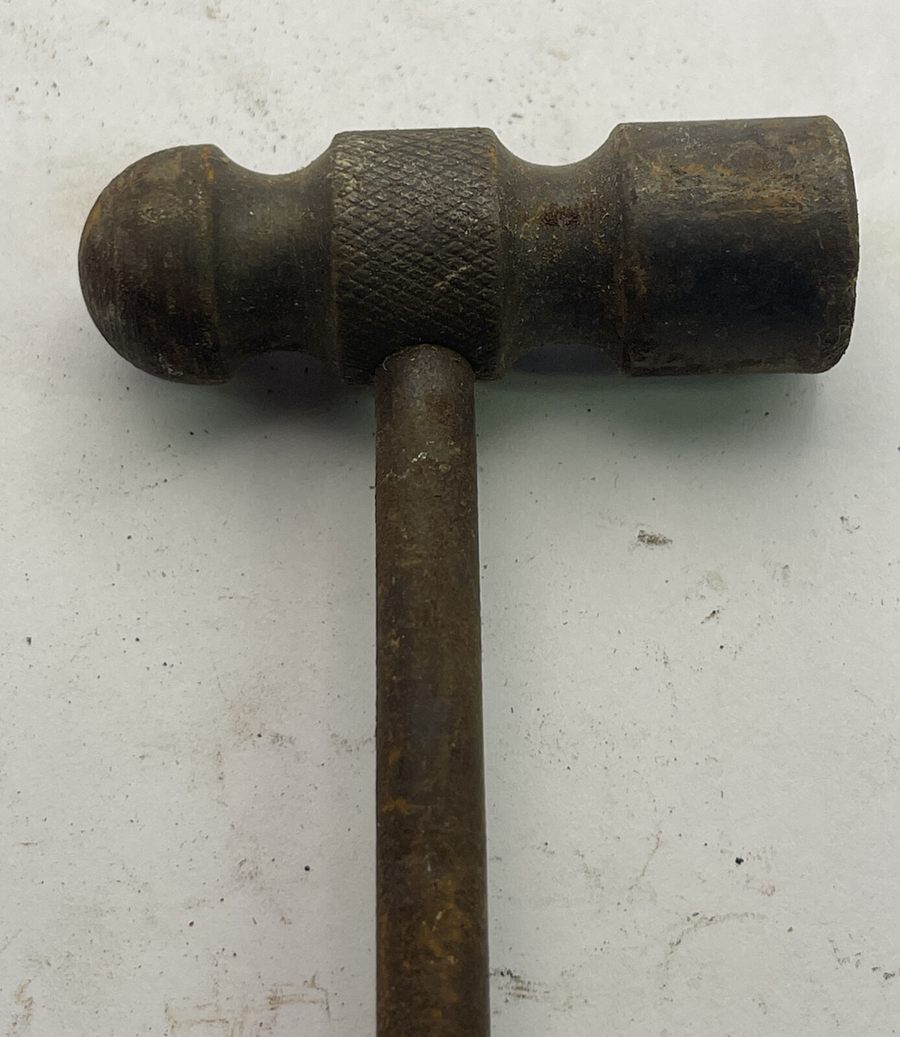
Ball peen hammers have a rounded head on one side and a flat head on the other. They are primarily used in metalworking to shape and bend metal. The value of antique ball peen hammers generally ranges from $40 to $150, varying based on factors like age, condition, and rarity.
Tack Hammers
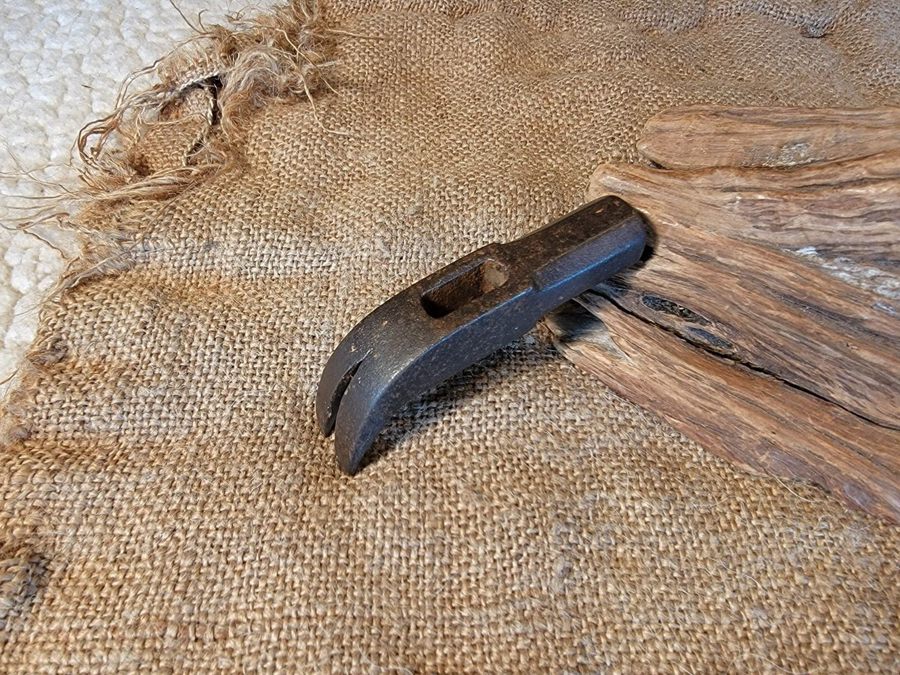
Tack hammers, also known as upholstery hammers, have two heads – one with a flat face and one with a split, claw-like shape for pulling tacks and nails. These hammers can be valued between $25 and $120, depending on factors such as age, rarity, and condition.
Other Hammer Types
There are numerous other types of antique hammers, including blacksmith’s hammers, brick hammers, and gavels. Each of these hammers can have varying valuations based on factors like age, rarity, and condition.
For instance, blacksmith’s hammers can range in value from $50 to $300, and vintage gavels can be valued between $75 and $500.
As you explore the world of antique hammers, remember that their age, rarity, and condition play a significant role in determining their value. Pay close attention to these factors as you assess and collect these unique tools.
Vintage Hammer Manufacturers
Stanley
Stanley, a well-known manufacturer of hand tools, has been producing quality hammers for over a century. When identifying a vintage Stanley hammer, look at the handle material, markings on the head, and the overall design. Common materials used in Stanley antique hammer handles were wood or metal. The value of a Stanley antique hammer can range between $50 to $250, depending on factors such as age, rarity, and condition.
Keen Kutter
Keen Kutter, a brand established in the late 19th century, is known for its high-quality vintage hammers. Identifying a Keen Kutter hammer involves examining the handle’s material, markings, and overall construction. Often, Keen Kutter hammers will have a distinct KK marking on the head. The value range for a vintage Keen Kutter hammer is typically between $100 to $300.
Henry Cheney Hammer Co
The Henry Cheney Hammer Company, founded in 1880, specialized in high-quality hammers for blacksmiths, metalworkers, and others. Look for the manufacturer’s stamp on the hammerhead, which should say “Henry Cheney Hammer Co.” Additionally, pay attention to the handle material and design features. The value of a Henry Cheney Hammer Co vintage hammer ranges from $60 to $200.
Maydole Hammers
Founded in 1845 by David Maydole, Maydole Hammers gained a reputation for durability and quality. To identify a vintage Maydole hammer, search for markings or inscriptions on the hammerhead, which may say “Maydole” or something similar. In addition, check the handle material and construction for signs of age. The value of a Maydole vintage hammer is typically between $40 to $150.
Other Manufacturers
Aside from the well-known brands mentioned above, numerous other manufacturers produced vintage hammers. Identifying these hammers requires similar examination methods, focusing on features such as handle materials and markings on the head. The value of vintage hammers from lesser-known manufacturers varies greatly, with a range from $20 to over $400, depending on rarity and condition.
When determining the value of an antique hammer, remember that factors such as condition, rarity, brand, and age all contribute to its value. Take your time examining each hammer and consult with experts or additional resources when needed.
Materials and Construction
Metal Hammerheads
When identifying antique hammers, the metal of the hammerhead plays a significant role in determining its value. Historically, various metals like copper, lead, and brass have been utilzied in hammerhead production. Each of these materials carries a different range of valuation:
- Copper Hammerheads: $50 – $150.
- Lead Hammerheads: $60 – $180.
- Brass Hammerheads: $70 – $200.
Be attentive to the signs of aging and patina that may indicate authenticity.
Wooden Handles
Wooden handles were prevalent in antique hammers. The quality, age, and type of wood used can impact the hammer’s overall value. Some common types of wooden handles found in antique hammers include:
- Oak: Valued between $40 and $120.
- Hickory: Valued between $50 and $150.
- Walnut: Valued between $60 and $180.
To determine the authenticity of an antique hammer’s wooden handle, look for signs of wear, such as dents and scratches, along with evidence of aging in the wood grain.
Bone Handles
Although less common, bone handles can be found in antique hammers, primarily those that may have served as ornamental pieces or specialty tools. The rarity of bone-handled hammers typically increases their value. Depending on the type of bone and its condition, these hammers could range in value from $80 to $250. Carefully examine the bone for aging and wear to help identify its authenticity.
Stone Heads
Stone heads are a classic example of ancient craftsmanship, predating metal hammerheads. Hammers with stone heads can be valuable both as tools and artifacts due to their age and historical significance. These hammers generally range in value from $100 to $300, with variations based on the type of stone, craftsmanship, and condition.
When examining antique hammers, consider the materials and construction that could indicate their age, rarity, and value. By understanding the different materials used in their production, you can better assess an antique hammer’s worth and enhance your collection.
Identifying an Antique Hammer
When you’re seeking to identify an antique hammer, there are several key factors to consider. In this guide, we will cover the most important aspects to help you accurately determine the age and value of a hammer.
Age of the Hammer
The age of the hammer is crucial when determining its value. Older hammers will typically be more valuable than newer ones. To identify a hammer from the 1700s, for example, look for a small, rounded handle with a flat stone head at the top, similar to a boat’s oar. These hammers might also have bone necks, feather hangings, and tight rope joineries. Remember that locally-made hammers from this time likely won’t have any brands or marks.
Manufacturer
Another important aspect to consider is the manufacturer of the hammer. Many antique tools come from well-known and respected brands, which adds to their collectible value. Look for any marks, logos, or other identifying features that can give you clues to the hammer’s origin. Keep in mind that some older hammers may not have a brand or manufacturer’s mark, but this doesn’t necessarily mean they aren’t valuable.
Materials and Design
Materials and design also play a significant role in determining the value of an antique hammer. Pay close attention to:
- One-piece metal construction or snugly pressure-fitted wooden handles, as these were common in high-quality antique hammers.
- A well-designed hammer that has a natural hold and swing.
- Hammers made with unusual materials or decorated with unique designs, as these can increase the value even further.
Avoid hammers that have epoxied fittings, as these are typically lower quality and less likely to be antique.
Here’s a summary of key factors to consider when identifying an antique hammer:
- Age of the Hammer
- Look for features consistent with hammers from specific time periods.
- Older hammers typically have more value.
- Manufacturer
- Search for marks, logos, or other identifying features to determine the brand.
- Famous brands generally bring higher value.
- Materials and Design
- Focus on high-quality materials and design elements.
- Watch for unusual materials or unique designs that increase value.
- Avoid epoxied fittings – less likely to be antique.
By keeping these factors in mind, you will be better equipped to identify an antique hammer and assess its value accurately.
Condition and Value
Functional Value
When looking at the condition of an antique hammer, its functional value is one crucial aspect. If the hammer is still functional, it generally adds to its overall value. Keep in mind that hammers with secure, sound connections between the head and handle are considered more valuable.
- Functional antique hammers (still usable): $20 – $60
- Non-functional antique hammers (no longer usable): $5 – $25
It is essential to check for signs of wear, as well as any damage or flaws, such as cracks in the handle or head. While some wear is expected, excessive deterioration will likely affect the hammer’s value.
Aesthetic Value
The aesthetic value of an antique hammer pertains to its visual appeal. Antique hammers with unique design elements, such as colored or intricate patterns, are typically more valuable than simpler hammers. However, white or less flashy colors might also be desirable, depending on personal preferences and market demand.
- Colored antique hammers with unique designs: $40 – $75
- White or simpler antique hammers: $20 – $40
Rarity
The rarity factor can significantly impact a hammer’s value. Rare antique hammers, such as those made by specific craftsmen or brands, are worth more. Rarity may also depend on the prevalence of certain types of hammers during a historical period or region.
- Rare antique hammers: $60 – $150 (depending on rarity and condition)
- Common antique hammers: $10 – $30 (depending on condition)
To determine your antique hammer’s value accurately, it’s a good idea to visit local antique shops or pawnshops. Experts in these establishments can help provide additional information and assist in assessing your hammer’s worth within the given price ranges.
Buying Antique Hammers
Offline Shopping
When searching for antique hammers offline, consider visiting auctions, estate sales, and antique stores. Keep in mind the following tips to find valuable pieces:
- Auctions: Look for local auctions specializing in tools or antiques. Auctions are a great way to find rare and valuable hammers that may not be available elsewhere. It’s important to have a budget in mind, as bidding can be competitive. Also, research the specific hammer brands and manufacturers that interest you to make informed decisions.
- Estate sales: Estate sales can be a treasure trove for antique tool collectors. As people clear out their homes or collections, valuable hammers may be offered at bargain prices. Arrive early to have the best chance of finding desirable items, and don’t hesitate to negotiate on price if you feel it’s warranted.
- Antique Stores: Antique stores often carry a variety of tools, including hammers. Look for stores specializing in antique tools or those who have a dedicated section for such items. Keep a list of manufacturers or specific hammers you’re looking for, and don’t be afraid to ask store owners or staff if they have any additional items in storage that match your interests.
Online Shopping
Finding and purchasing antique hammers online can be a convenient option with access to a wider selection. Consider the following guidelines when shopping online:
- Websites: Numerous websites offer antique tools for sale, including eBay, Ruby Lane, and WorthPoint. While browsing these sites, use targeted search terms such as “antique hammer,” specific manufacturers’ names, or the type of hammer you’re interested in.
- Inspect Images: Closely review the provided images of the hammer when shopping online. Any signs of wear, unusual markings, or unique design elements can help validate the authenticity and value of the item.
- Seller Feedback: Review the seller’s feedback and satisfaction ratings – only buy from sellers with a track record of positive reviews and transactions. Be cautious of new or low-rated sellers when purchasing valuable antiques.
- Shipping & Returns: Pay close attention to shipping costs and return policies, as these can greatly impact the final cost and overall satisfaction of your purchase. Look for sellers that offer reasonable shipping fees and a clear, generous return policy.
By considering these strategies for both offline and online shopping, you can confidently acquire antique hammers that complement your collection or add value to your toolbox.
Final Thoughts
When identifying antique hammers, it’s essential to pay attention to their design. Older hammers were generally simpler, with straight lines and no frills. The handles were also usually shorter than those on modern hammers. Keep in mind that different types of hammers, such as claw, veneer, and gavel hammers, are available, but gavel and stone sledge hammers are likely to provide the best returns.
As you browse through different antique hammers, remember their value ranges from $30 to $200, depending on factors like the brand, authenticity, and condition. Be sure to examine the hammer closely for any identifying marks, such as logos or unique patterns. Additionally, be aware that some hammers are made from natural materials like bamboo or bone, which can also affect their value.
Consider these factors when determining the value of an antique hammer:
- Material: Natural materials like bone or bamboo can increase a hammer’s value.
- Design: Simpler designs with straight lines and no frills can indicate older hammers.
- Type: Gavel and stone sledge hammers are more likely to provide higher returns.
By keeping these factors in mind and staying patient during your search, you’ll be well on your way to finding a unique and valuable antique hammer for your collection. Happy hunting!
FAQ
What should I look for to identify an antique hammer?
To identify an antique hammer, it’s important to consider its materials, markings, and wear and tear. Antique hammers typically feature wooden or metal handles, so avoid hammers made from plastic or synthetic materials. Examine the hammerhead for any identifying marks, which can give clues as to who made it and when. Finally, check for signs of wear, such as scratches or dents, to help determine its age.
What types of antique hammers are more valuable?
There is a variety of antique hammers, but some types tend to be more valuable than others. Among them, gavel and stone sledge hammers are known for good returns. Other types of antique hammers you might come across include claw, veneer, and blacksmith’s hammers.
What are the price ranges for antique hammers?
The value of an antique hammer can vary greatly depending on factors like rarity, condition, and type. Generally, antique hammers can be worth anywhere from $30 to $200. The most valuable hammers typically have unique features or come from well-known brands and have original, authentic components.
How can I tell the difference between a claw hammer and a veneer hammer?
A claw hammer has a rounded, flat head on one side, suitable for driving nails, and a claw-like bent end on the other side that can be used for various tasks, like removing nails. In contrast, a veneer hammer is primarily designed for working with wood veneer and typically has a wide, flat head, and a rounded or flat opposing end.
Remember to approach the identification and valuation of an antique hammer with confidence, knowledge, and a neutral tone. Keep your information accurate and avoid making exaggerated or false claims.


